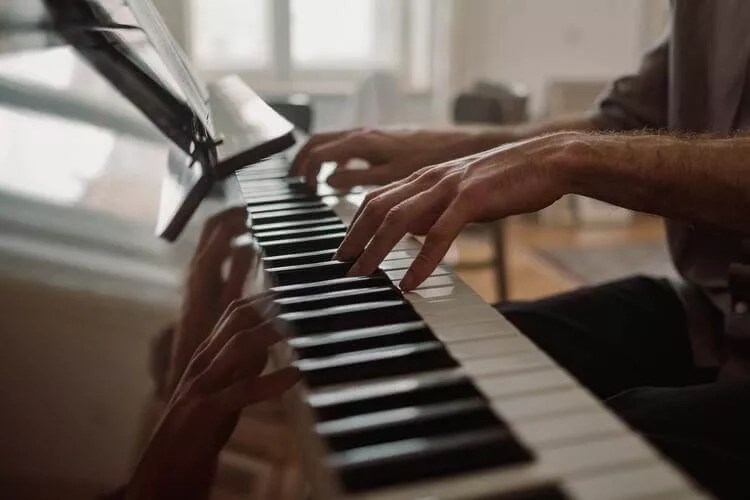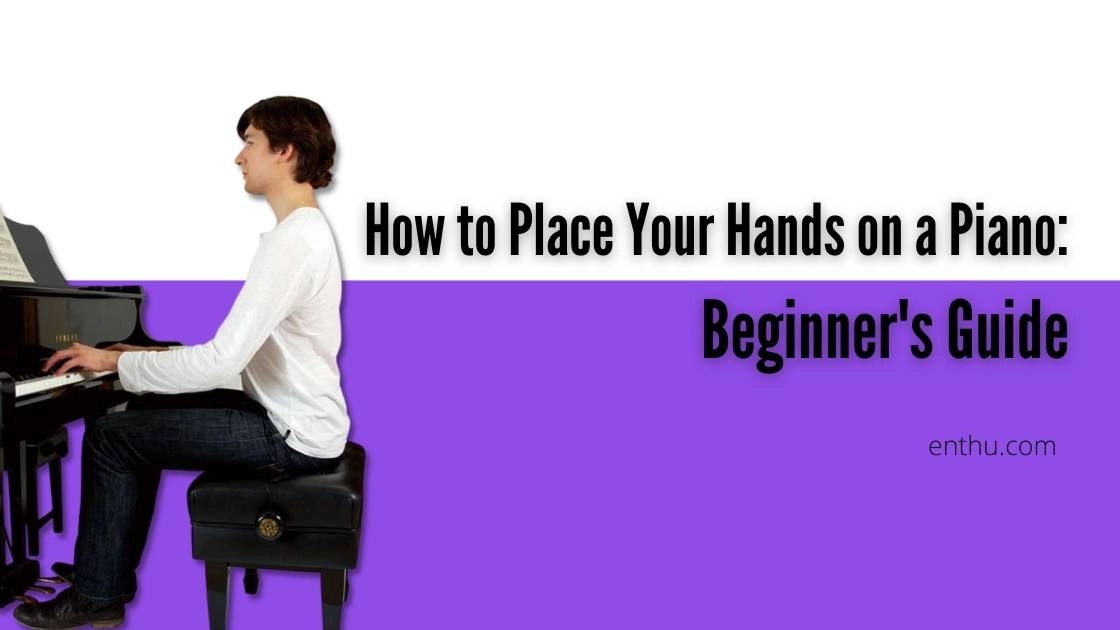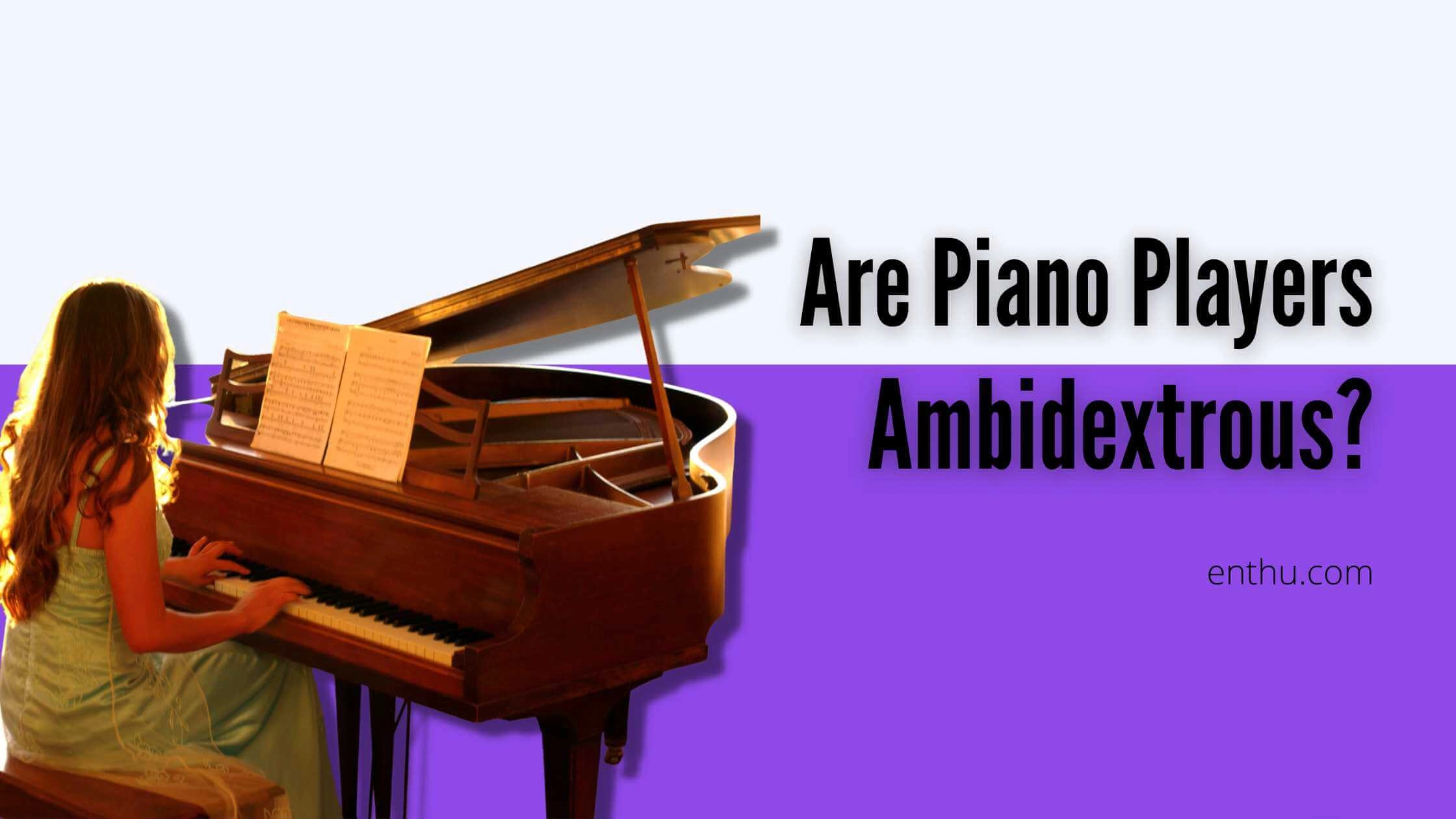When I first saw Martha Argerich playing Chopin with both her hands, I was totally blown by it. I always wondered, "Are piano players ambidextrous?" And doubted if I could play with both my hands.
3 years into my piano learning journey, I can tell you if pianists are ambidextrous or not.
Did you know only 1 percent of the population is naturally ambidextrous?
Are Piano Players Ambidextrous?
The answer to the question is a yes, then a no. Pianists are supposed to play with both hands. But not all pianists can do so from the beginning itself.
Practice, patience, and perseverance make a piano player ambidextrous. They are not born ambidextrous.
The answer to the question is a yes, then a no. Pianists are supposed to play with both hands.But not all pianists can do so from the beginning itself. Practice, patience, and perseverance make a piano player ambidextrous. They are not born ambidextrous.
Do you have to be ambidextrous to learn piano?
No. You do not have to be naturally ambidextrous to learn this instrument. Many pianists develop ambidexterity with time and consistent practice. Natural ambidexterity is rare and that should not stop you from playing your favorite instrument.
Initially, a piano teacher asks his student to play with one hand, i.e., the dominant hand. Once that is mastered, pianists start to train their other hand and proceed to use both hands on the instrument. Such practices help to grow ambidexterity in a pianist over time.

All you need to do is practice regularly to strengthen your hands and fingers. At first, you will struggle, but gradually you will see your non-dominant hand play nimbly complex pieces easily and quickly.


Playing Piano With Both Hands
Does an ambidextrous person find it easy to learn piano?
Playing piano requires equal hand independence and finger dexterity on both hands. For an ambidextrous person, all of these come very naturally. They can pick up scales and notes more quickly than others. Yet, one should not overestimate one's ambidextrous ability.

The piano is an easy-to-play instrument compared to other instruments because its keys are spread out in front of the eyes. Understanding music theory to play piano also becomes easy for the same reason. However, as professionals say, this instrument becomes complex as you keep learning it more.
Complex piano pieces need better muscle memory. Even an ambidextrous learner must know how to memorize a piano piece proficiently and build muscle memory accordingly.
Will piano make me ambidextrous?
Research shows the function of a pianist's brain is quite different from any average person's. Their brain assimilates and analyzes any task in the social and academic scenario with more expertise. They even grow ambidexterity after a period.
Not only piano, other musical instruments such as guitar, ukulele, and violin also involve both hands of the practitioner. But it's different for a pianist. While playing a complex piece, if the right hand of a pianist works to make a melody, the left hand works to create harmony.
Hence, both hands are working together but for a separate reason. Besides, the stepping stone to learning this instrument is to practice warm-ups for independent hand movement.
As pianists practice these religiously, their non-dominant hand also becomes agile, and with time they become ambidextrous. Are you struggling to place your hands on a piano?

Best Tips to Be Ambidextrous
If you want to be ambidextrous, you need to do regular practice.
Here are a few tips that you can practice
Write at least one page daily with your non-dominant hand.
Do not limit yourself to writing only. Do other daily tasks such as brushing, combing, and eating with a spoon with your other hand.
Draw shapes in the air with your opposite hand.
Finally, implement your practice on your instrument. At first, you will find it difficult, but do not give up! Keep doing the hard work, and you will see the difference within a month.
Effects of Playing Piano on the Motor
System Neuroscience says playing piano has an immense effect on the human brain.
The benefits of playing music are manifold
Playing the piano strengthens the visual, auditory, and motor receptors allowing the brain to receive and process messages faster.
Research has found music prevents rapid aging of the brain. It increases brain function and works as a good prevention against Alzheimer's.
Musicians have to interpret a piece's emotional content and message. Due to this, they have a better executive function of the brain.
It increases I.Q. level. Glenn Schellenberg of the University of Toronto explained that the multilayered learning experience of playing the piano, such as memorizing, expressing emotion, and understanding music theory, affects I.Q.
More Resources
11 Easy Piano Songs for Kids and Beginners | |

Famous Ambidextrous Composers
Ludwig van Beethoven
Wolfgang Amadeus Mozart
Johann Sebastian Bach
Paul McCartney


Conclusion
Not all piano players are ambidextrous by birth. Indeed, the instrument involves both hands to play. Professionals achieve this with rigorous practice. They train their hands and brains to pace together. Does that sound scary to you? Don't panic.
Learn from the expert and keep practicing. I am sure you will become ambidextrous in no time!
FAQs
1. Why do piano players need to be ambidextrous?
Piano players need to be ambidextrous as playing this instrument involves independent movement of both hands. This does not mean they are born ambidextrous. Due to their routine practice, their central sulcus becomes symmetrical to ignore the dominance of one hand.
2. What are the advantages of being ambidextrous?
If you are an ambidextrous, you are special. Your dual-handedness can open a wide range of possibilities in sports. It is a great advantage if you are a musician. Besides, ambidextrous people are more creative and sharp than average people.
3. Do left-handed pianists face more difficulties in playing piano?
Left-handed pianists face more difficulties playing piano is a myth. While playing both hands have great responsibilities. The right hand plays the melody and the left has the most outstretched position. In reality, all pianists need to become ambidextrous. Therefore, choosing one hand over the other does not work for them.
5. Are all professional pianists ambidextrous?
Yes, all professional pianists are ambidextrous. They practice diligently to strengthen their weaker hand to match the other hand. After some time all the pianists become dual-handed.


Comments